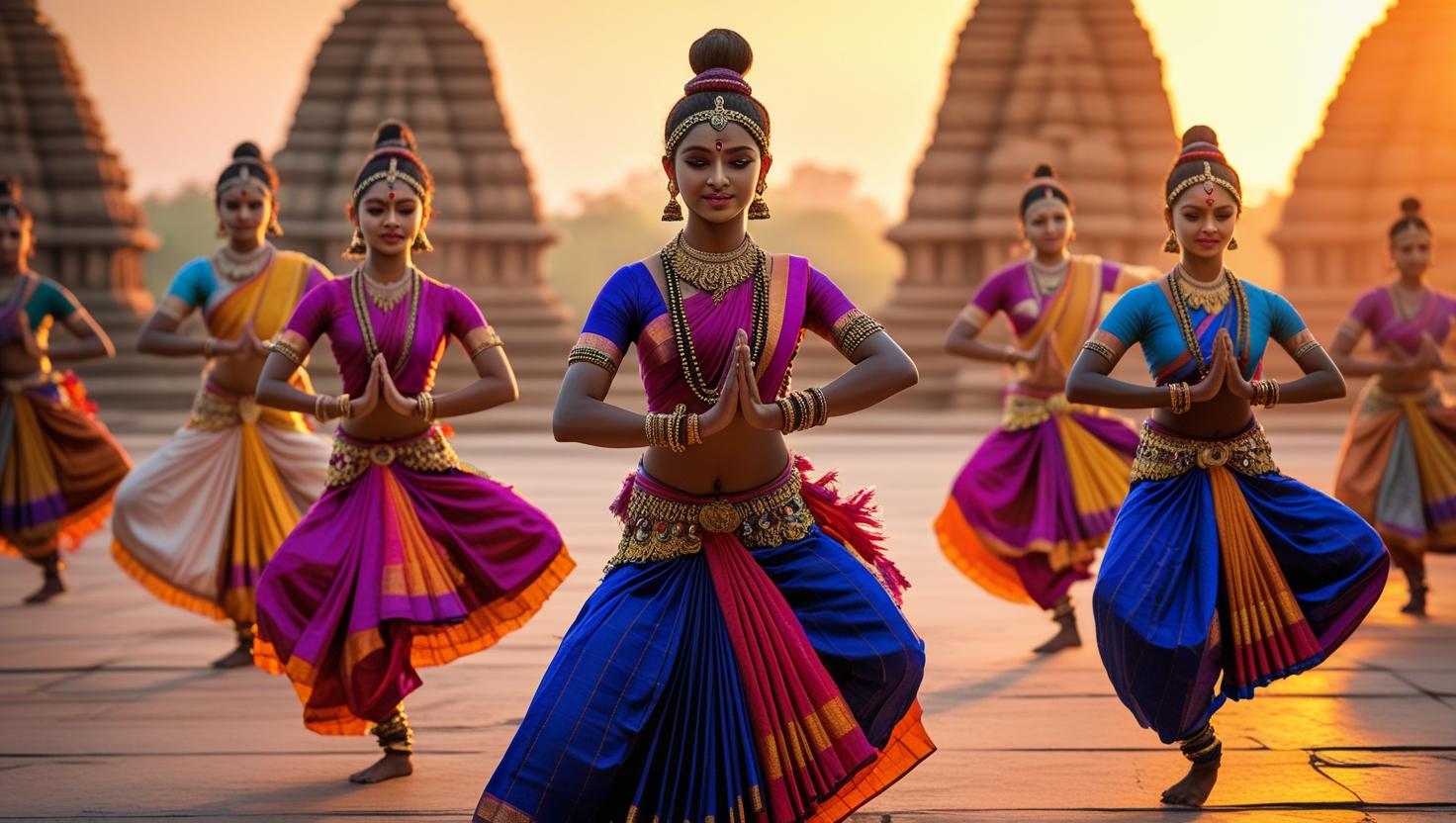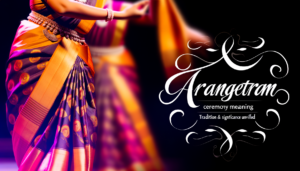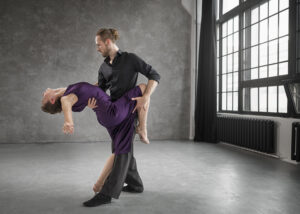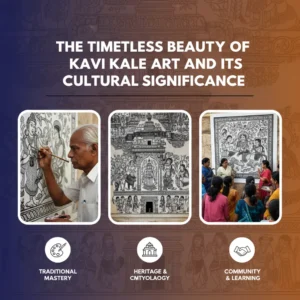Exploring Karnataka Traditional Dance: The Beauty of Bharatanatyam and Kuchipudi
Karnataka is a land of vibrant culture and rich traditions. Its dance forms are a testament to this heritage. Among these, Bharatanatyam and Kuchipudi stand out for their grace and depth.
Bharatanatyam is one of India’s oldest classical dances. It has a history that spans over 2,000 years. This dance form is known for its intricate footwork and expressive gestures.
Kuchipudi, though originating in Andhra Pradesh, has a strong presence in Karnataka. It is celebrated for its narrative style and dance-drama format. Both dances are integral to Karnataka’s cultural identity.
These classical dances are more than just performances. They are a blend of art, spirituality, and storytelling. Through them, Karnataka’s cultural legacy continues to thrive.
Introduction
Karnataka’s traditional dances are a window into its cultural soul. They tell stories of the past while evolving into the future. The state boasts a range of dance forms, each with its own unique flavor and style.
Here’s what makes Karnataka’s dance forms captivating:
- Rich historical roots and evolution.
- A blend of art, emotion, and spirituality.
- Diverse forms like Bharatanatyam, Kuchipudi, and folk dances.
These dances not only entertain but also educate. They preserve Karnataka’s rich cultural heritage and continue to inspire future generations. Each step, gesture, and expression enriches the cultural tapestry of the region.
Bharatanatyam
Bharatanatyam is more than just a dance; it’s an ancient tradition rooted in devotion. Its origins are deeply tied to the temples of Tamil Nadu, but its influence has spread across India, including Karnataka.
This classical dance form is a harmonious blend of footwork, expressions, and storytelling. Its structured format allows dancers to convey complex emotions with grace and elegance.
The dance is characterized by intricate hand gestures and rhythmic foot patterns. Each movement is meticulously crafted, representing centuries of rich heritage.
Performances often narrate stories from Hindu mythology, illustrating tales of gods, goddesses, and moral lessons. Through these narratives, Bharatanatyam becomes a medium for spiritual expression.
Key attributes of Bharatanatyam include:
- Complex footwork and rhythmic patterns.
- Expressive facial expressions and hand gestures.
- Stories woven from ancient Indian epics.
Bharatanatyam’s appeal lies in its depth and precision. With each performance, dancers not only entertain but also invite the audience into a world steeped in tradition and cultural legacy.
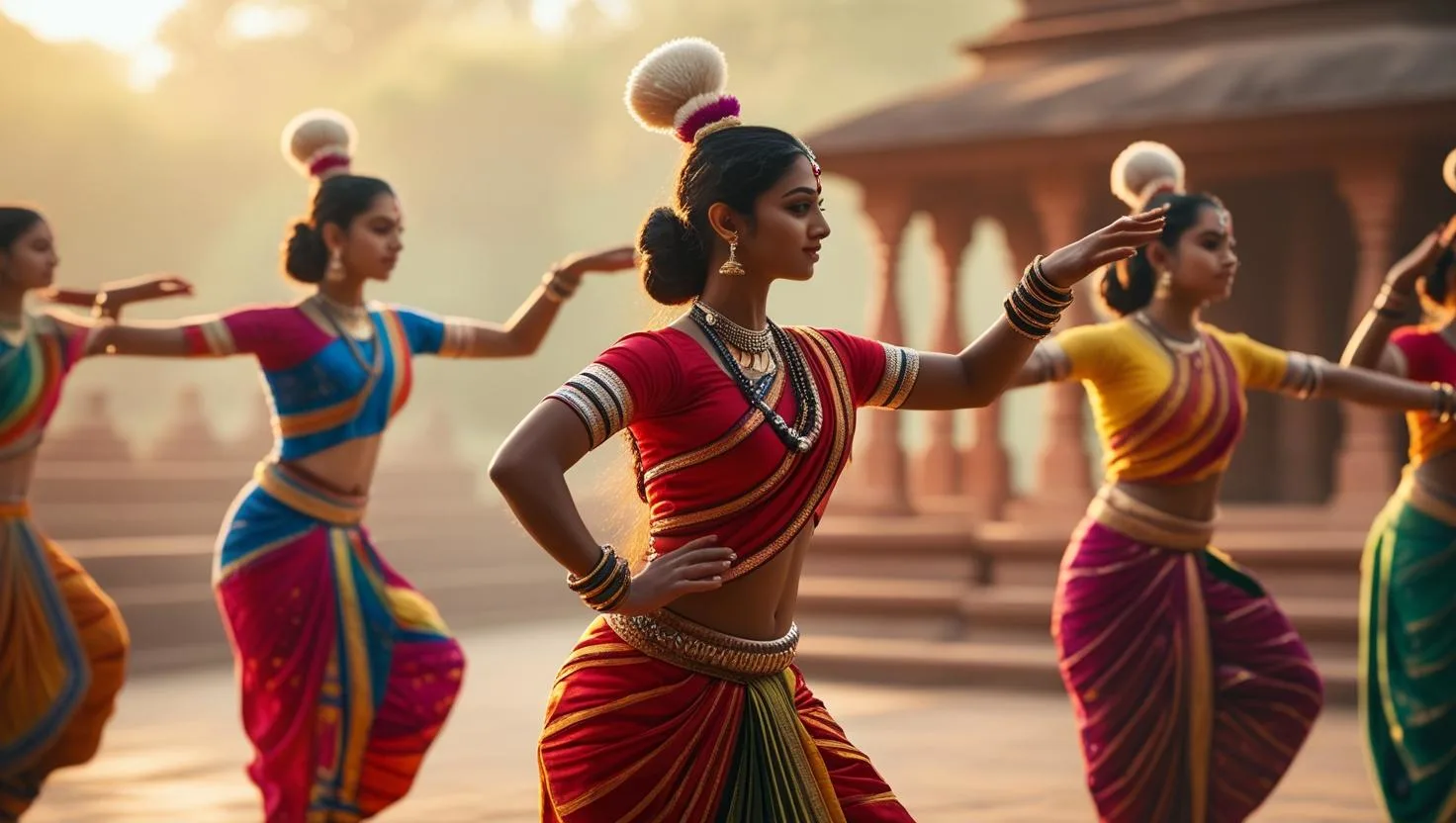
History of Bharatanatyam
Bharatanatyam is one of India’s oldest classical dance forms, dating back over 2,000 years. Originating in Tamil Nadu, it was initially performed in temples as a form of worship. Its early practitioners were devadasis, women dedicated to serving the deities through dance.
Evolution of Bharatanatyam
Over time, Bharatanatyam evolved from temple rituals to stage performances, gaining global recognition. This evolution involved changes to its structure and presentation, enhancing its appeal.
Key points in its evolution:
- Transition from temple art to stage performance.
- Inclusion of new stories and themes.
- Adaptation of contemporary ideas while retaining tradition.
Key Features and Styles
Bharatanatyam is marked by a unique set of features that set it apart. Its styles are varied yet distinctive, each conveying different emotions and stories.
Prominent features include:
- Fixed upper body posture.
- Bent legs and intricate footwork.
- Elegant yet expressive hand gestures.
Different styles have emerged, each named after its proponent and region. Whether it’s the dramatic expressions or the rhythmic footwork, each style adds to the dance’s richness.
Influential Bharatanatyam Performers
Numerous performers have shaped Bharatanatyam, leaving an indelible mark on its history. Their contributions have been instrumental in popularizing this dance form.
Notable performers include:
- Rukmini Devi Arundale, for modernizing its presentation.
- Balasaraswati, renowned for expressive storytelling.
- Alarmel Valli, celebrated for her intricate footwork.
These icons have preserved and transformed Bharatanatyam, ensuring its enduring legacy.
Kuchipudi
Kuchipudi is another celebrated Indian classical dance form with roots in Andhra Pradesh. Despite its origins, it has found a thriving base in Karnataka. Known for its fast-paced movements and compelling narratives, Kuchipudi stands out with its dance-drama format.
The dance is a beautiful confluence of rhythm, music, and expression. It uses storytelling as a key element to engage audiences with tales of mythological and spiritual significance. Dancers perform with detailed expressions and fluid movements, creating a dynamic visual treat.
Performances are accompanied by vibrant Carnatic music, enhancing the emotional depth and energy of the stories told. This synergy between music and movement is a defining feature of Kuchipudi, captivating audiences worldwide.
Key elements of Kuchipudi include:
- Fast-paced and intricate footwork.
- Dramatic storytelling and dance-drama format.
- Rich expressions and rhythmic grace.
Kuchipudi’s distinct features make it both a visual and emotional experience. Each performance leaves a lasting impact, celebrating the cultural and artistic traditions of Karnataka and beyond.
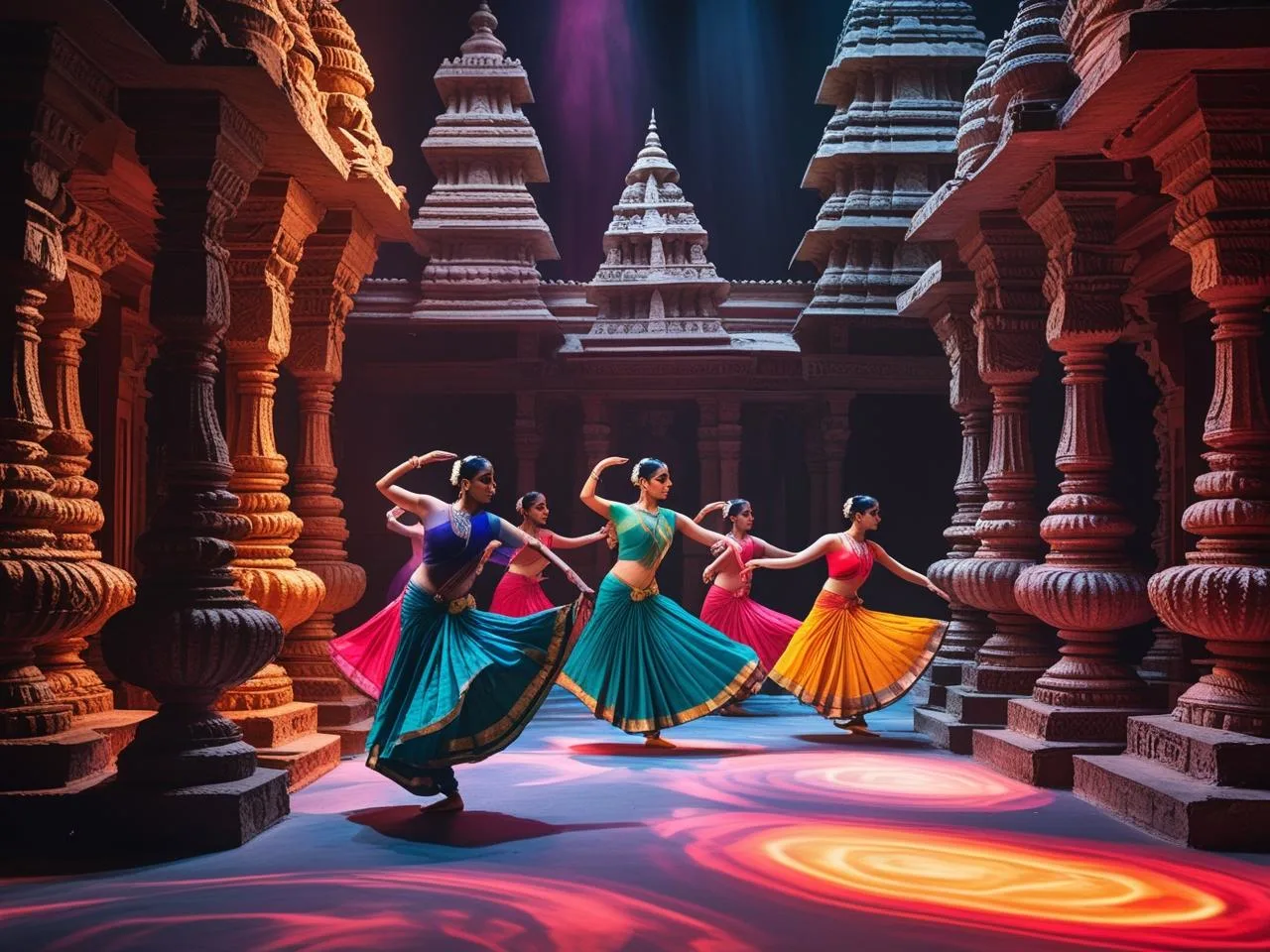
Overview of Kuchipudi Dance Drama
Kuchipudi uniquely blends dance and drama, creating a theatrical experience. Its performance style is vibrant and energetic, capturing the essence of its stories. The dance drama is presented through a graceful confluence of music, rhythm, and narrative.
Key aspects include:
- Integration of dialogue, dance, and song.
- Use of expressive makeup and costumes.
- Representation of mythological tales and historical themes.
Cultural Significance in Karnataka
In Karnataka, Kuchipudi has grown beyond mere performance. It represents a cultural bridge between ancient traditions and modern expressions. It enriches Karnataka’s dance heritage by showcasing diverse narratives and fostering artistic appreciation. The state’s dedication to this art form is evident in its enthusiastic embrace and support.
Key Components of Kuchipudi
Kuchipudi is characterized by distinctive components that define its unique style. It seamlessly blends music, rhythm, and emotions into a unified narrative.
Fundamental components include:
- Intricate footwork and gentle body movements.
- Expressive facial expressions enhancing the narrative.
- Elaborate costumes that enhance visual appeal.
The dance’s elements work in tandem to captivate the audience, creating an immersive experience that resonates emotionally and culturally. Each component adds depth to the storytelling, transforming a dance performance into an engaging spectacle.
Prominent Kuchipudi Artists
Several renowned performers have shaped and promoted Kuchipudi, leaving lasting legacies. Their passion and skill have elevated the art form on national and international stages.
Noteworthy artists include:
- Vempati Chinna Satyam, famed for choreographic innovations.
- Yamini Krishnamurthy, celebrated for powerful performances.
- Raja and Radha Reddy, known for dynamic duets.
These artists have significantly contributed to the art’s evolution, ensuring that Kuchipudi continues to captivate and inspire audiences globally.
Comparison of Bharatanatyam and Kuchipudi
Bharatanatyam and Kuchipudi are distinct yet interconnected classical dance forms from South India. Both share a common cultural base while exhibiting unique characteristics. These dance styles captivate audiences with their grace, precision, and storytelling.
The dances are similar in their roots in ancient traditions and their shared use of expressive storytelling. However, Bharatanatyam is often more geometric and grounded, while Kuchipudi is known for its fluid and brisk movements.
Here’s a comparison of their key features:
- Bharatanatyam: Structured and angular poses.
- Kuchipudi: Fluid and dynamic movements.
- Both: Rich expressions and storytelling elements.
These elements illustrate how cultural nuances shape each form while enriching Karnataka’s dance tapestry.
Similarities and Differences
While both forms are steeped in classical Indian dance traditions, their execution varies. Bharatanatyam is known for its precise, geometric postures. Kuchipudi, however, exhibits more fluidity and expressive footwork.
Key similarities and differences include:
- Both use expressive storytelling through facial expressions.
- Bharatanatyam focuses on symmetry and structure.
- Kuchipudi integrates drama and narrative fluidity.
Each dance form offers a unique experience, adding to India’s rich performing arts landscape. Though distinct, they share a spirit of cultural preservation and artistic expression.
Influence of Regional Styles
Regional influences play a significant role in shaping these dances. The local ethos imbues them with unique flavors and adaptability. While Bharatanatyam maintains a structured format, Kuchipudi integrates regional drama styles.
Influences can be observed in:
- Costumes adapted to local aesthetics.
- Musical accompaniments resonating with regional sounds.
- Local storytelling traditions influencing choreography.
These regional styles ensure the dances remain vibrant and relevant, reflecting an evolving yet timeless cultural heritage.
Karnataka Folk Dances
Karnataka, with its diverse cultural landscape, boasts a rich collection of folk dances. These dances offer a window into the state’s vibrant traditions and community life. Each dance form reflects the customs and beliefs of its region.
Folk dances are deeply entwined with daily life and local celebrations. They often convey stories of folklore, mythology, and daily experiences, creating a lively tapestry of movement and color.
Some of these traditional dances include:
- Yakshagana: A night-long dance-drama performance.
- Dollu Kunitha: A drum dance with vibrant costumes.
- Kamsale: Known for its rhythmic movements and singing.
These dances not only entertain but also preserve Karnataka’s cultural essence.
Overview of Folk Dances in Karnataka
The folk dances of Karnataka are colorful, dynamic, and deeply rooted in regional traditions. They serve as a medium for storytelling and celebration during festivals and community gatherings.
Key elements include:
- Emphasis on rhythm and vibrant costumes.
- Themes drawn from mythology and local folklore.
- Participation of community members in performances.
Through these traditions, folk dances continue to be a cherished part of Karnataka’s cultural identity.
Popular Folk Dance Forms
Karnataka’s folk dances are as varied as its landscapes. Each dance form carries distinct attributes unique to its origin. Yakshagana, for instance, blends dance, music, and dialogue in an enthralling performance.
Other prevalent forms include:
- Dollu Kunitha: Acclaimed for its vigorous drumming.
- Kamsale: Features synchronized dance with cymbals.
- Pattada Kunitha: Known for its celebratory use of traditional drums.
These dances, celebrated across various festivals, weave a cultural narrative that is both vibrant and enduring. They ensure the preservation of Karnataka’s rich artistic legacy.
Conclusion
Karnataka’s traditional dances, particularly Bharatanatyam and Kuchipudi, are integral to its cultural heritage. These dances provide a deep, expressive lens into artistic and spiritual narratives. They uniquely blend historical richness with contemporary relevance.
Bharatanatyam and Kuchipudi, alongside vibrant folk dances, continue to thrive, preserving Karnataka’s cultural identity. Through each performance, they reaffirm the region’s enduring artistic legacy and spirit.
